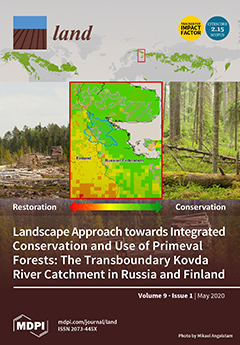Resources
Displaying 1441 - 1445 of 2258Historical-Genetic Features in Rural Settlement System: A Case Study from Mogilev District (Mogilev Oblast, Belarus)
Settlement system development is currently one of the basic objectives in land use planning, which is significant for Belarus, as it is the most urbanized country in the European region. Historical-genetic analysis is the most effective approach for studying the transformational changes in settlement systems. The research was aimed at analyzing the transformation peculiarities in the rural settlement system of Belarus.
Sustainable Residential Building Considerations for Rural Areas: A Case Study
Intelligent use of rural residential land and sustainable construction is inexorably linked to cost; however, options exist that are eco-friendly and have a positive return on investment. In 2011, a research residence was built to evaluate various land-use and sustainable components. This Texas house has subsequently been used for both residential and research purposes. The purpose of this case study was to evaluate break-even construction considerations, to assess environmental impacts, and to evaluate qualitatively efficacy of sustainable options incorporated in the research residence.
Coupling Analysis of Urban Land Use Benefits: A Case Study of Xiamen City
The high coupling coordination of urban land use benefits is a significant factor for urbanization and sustainable urban development. This study, based on the statistical data from 2002 to 2017 of Xiamen City, constructs an index system that includes social, economic, ecological, and environmental benefits by evaluating the overall coupling coordination degree of land use benefits, using the entropy weight method (EWM), the coupling coordination degree (CCD) model, and the dynamic coupling coordination degree (DCCD) model.
A Spatial-Temporal Analysis of the Effects of Households’ Land-use Behaviors on Soil Available Potassium in Cropland: A Case Study from Urban Peripheral Region in Northeast China
Available potassium (AVK) in the soil of cropland is one of the most important factors determining soil quality and agricultural productivity. Thus, it is crucial to understand the variation of AVK and its influencing factors for sustaining soil fertility and mitigating land degradation. Farm households are the ultimate land users, and their land-use behaviors inevitably play an important role in the variation of AVK. This paper, therefore, aims to explore the effects of households’ land-use behaviors on soil AVK from spatial and temporal perspectives.
Land Functions, Rural Space Governance, and Farmers’ Environmental Perceptions: A Case Study from the Huanjiang Karst Mountain Area, China
Residents of rural areas live and depend on the land; hence, rural land plays a central role in the human–land relationship. The environment has the greatest direct impact on farmers’ lives and productivity. In recent years, the Chinese government carried out vigorous rural construction under a socialist framework and implemented a rural revitalization strategy. This study was performed in a rural area of Huanjiang County, Guangxi Province, China. We designed a survey to measure rural households’ perceptions of three types of rural spaces: ecological, living, and production spaces.


